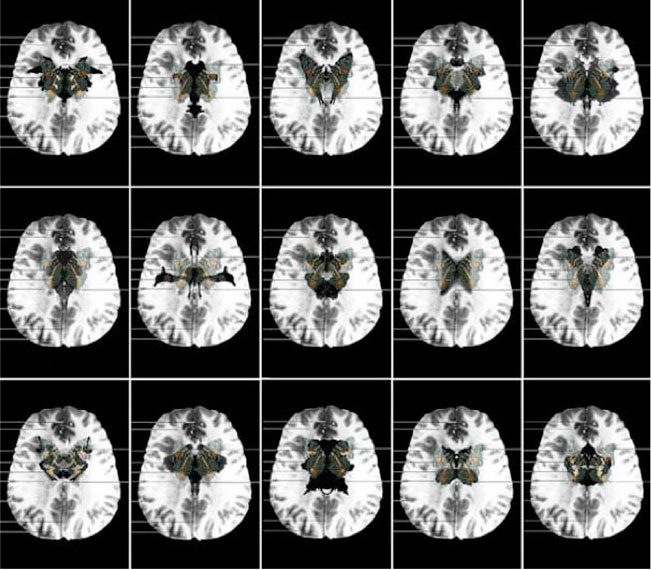Week 7: Neuroscience + Art
Neuroscience, the study of the function and structure of the human brain and nervous system, has proven to have a profound impact on the realm of art, being portrayed in film, mass media, artwork, and much more. Of course, this is also due to the fact that neuroscience helps to reveal various aspects of our individuality, such as our consciousness, decision-making process, and socio-psychological interactions (Frazzetto and Anker). One of the artists that particularly stood out to me this week was Suzanna Anker, an American visual artist and theorist who is considered to be a pioneer in Bio Art. Her work, "MRI Butterfly" is based on a series of identical MRI brain scans that feature an image of a butterfly, as well as Rorschach-like inkblots.
This overlay of the butterfly, MRI scans, and inkblots results in "nuanced variations" that ultimately create optical illusions for the viewer (Frazzetto and Anker). Each of the scans looks completely different from one another, despite the butterfly image being identical in each one. And I must admit that I fell for this optical illusion when Professor Vesna first introduced this piece of art to us in lecture. I totally thought that Anker had used a variation of butterfly pictures for each of the scans.
Although Anker's project is not necessarily an "exploration of identity," it does play a significant role in demonstrating for us the incredibly intricacy that is involved in the "neurological processes at work in perception" (Frazzetto and Anker).
 |
| "MRI Butterfly." Archive of Digital Art, https://digitalartarchive.at/database/general/work/mri-butterfly.html. |
It should be pointed out that Anker's incredible work is also inspired by the great Santiago Ramón y Cajal, a Spanish pathologist, histologist, and neuroscientist. Cajal is known for his contributions to what we now call "neuron theory," in which he determined that interneurons are partly responsible for setting apart the human brain from the brains of other species (Jiang). For Cajal, these specific neurons were considered to be the "butterflies" of the soul, playing an important role in transmitting impulses/information to other sensory and motor neurons in the body (Vesna). Today, Cajal's complex drawings pertaining to neuron theory and neuroanatomy are still used in textbooks.
 |
| "Purkinjie Neurons in the Human Cerebellum." The NY Times, https://www.nytimes.com/2018/01/18/arts/design/brain-neuroscience-santiago-ramon-y-cajal-grey-gallery.html. |
Works Cited:
1.) Anker, Suzanne. "MRI Butterfly." Archive of Digital Art,
https://digitalartarchive.at/database/general/work/mri-butterfly.html. Accessed May 18, 2023.
2.) Frazzetto, Giovanni, and Suzanne Anker. “Neuroculture.” Vol. 10, Macmillan Publishers Limited,
2009, pp. 815-820.
3.) Jiang, Kevin. "Butterflies of the Soul." Harvard Medical School,
https://hms.harvard.edu/news/butterflies-soul. Accessed May 18, 2023.
4.) "What is Neuroscience?" Psychology Today,
https://www.psychologytoday.com/us/basics/neuroscience. Accessed May 17, 2023.
5.) Smith, Roberta. "A Deep Dive Into the Brain, Hand-Drawn by the Father of Neuroscience." The New
York Times, https://www.nytimes.com/2018/01/18/arts/design/brain-neuroscience-santiago-ramon-
y-cajal-grey-gallery.html. Accessed May 19, 2023.
6.) Vesna, Victoria. Lecture: Neuroscience + Art Part 1. Desma 9: Art, Science, and Technology.
University of California, Los Angeles.

Comments
Post a Comment